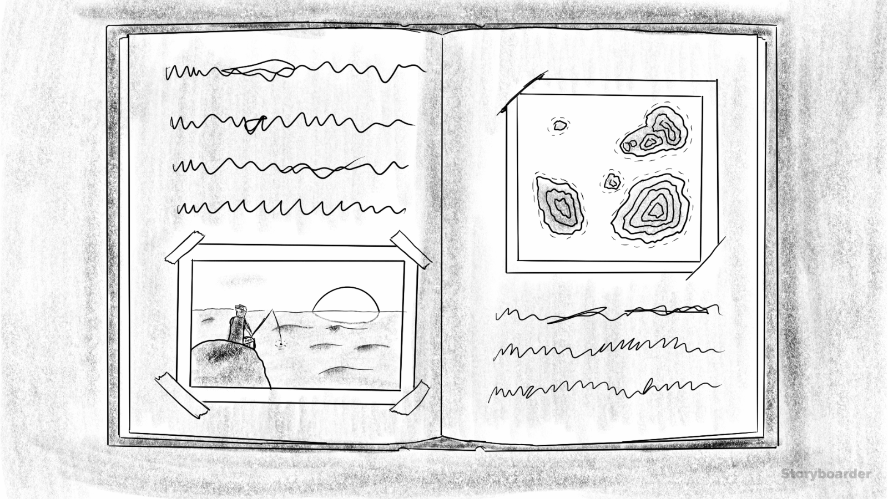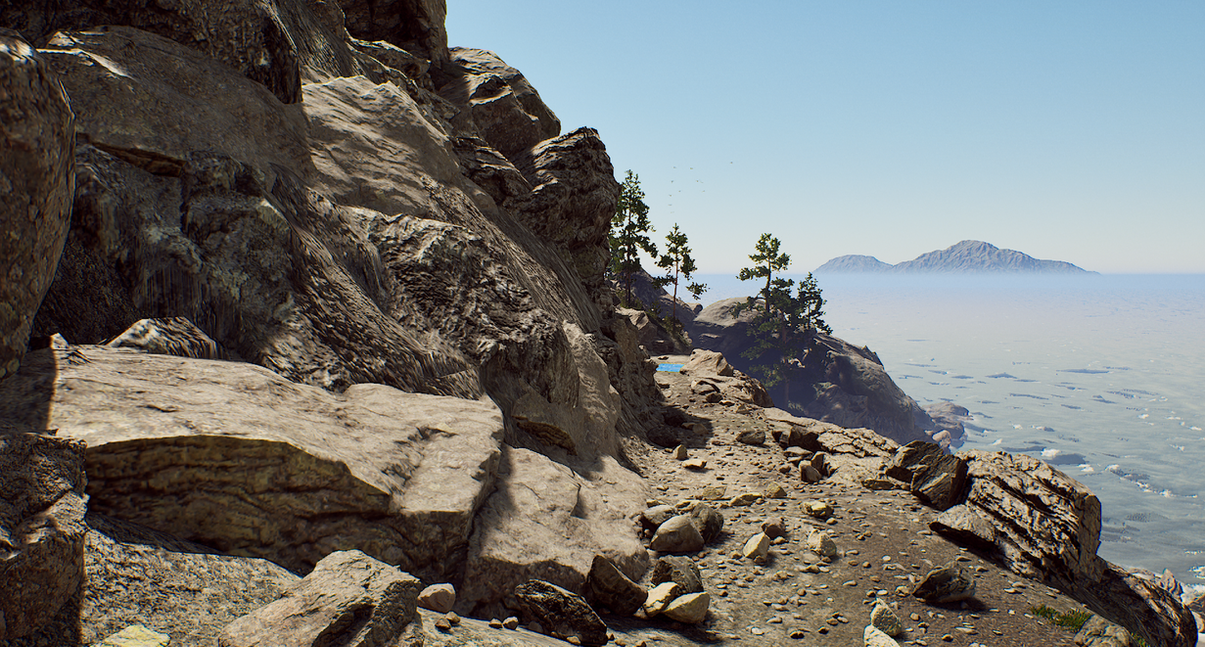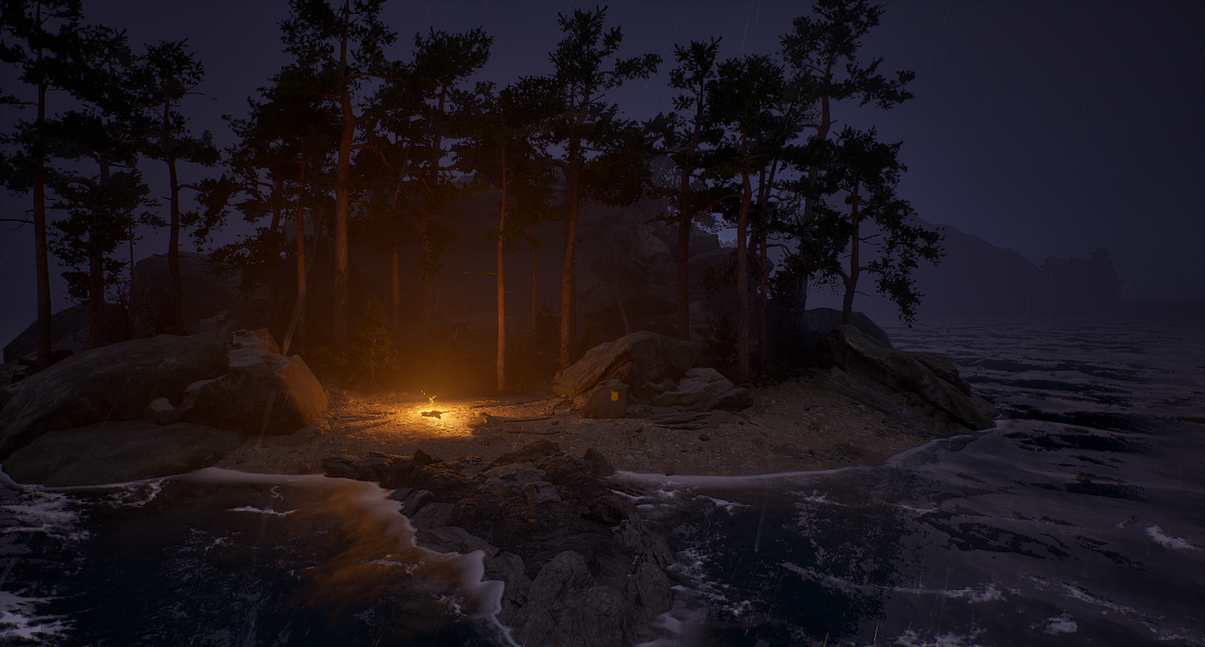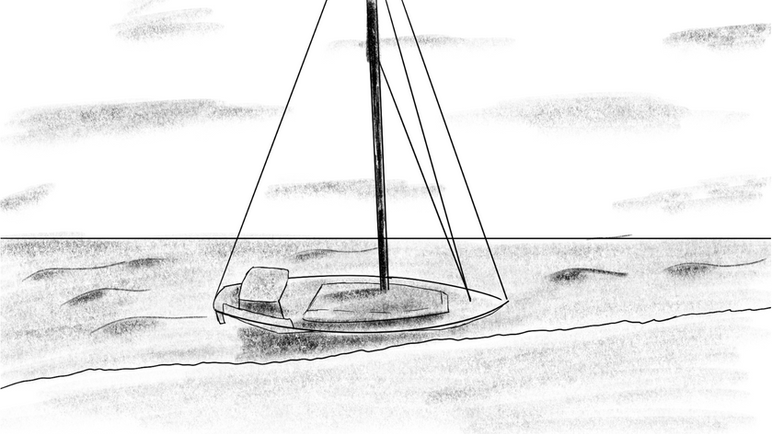ROLES
Lead Level Designer
Technical Level Designer
Setdressing
Marketing Department
DESCRIPTION
As a sailor named Ethan, you set sail on an Alaskan summer adventure while searching for your missing twin. Navigate the treacherous weather, survive dangerous wildlife encounters, and sail between islands within the archipelago to reunite with your brother. In the open-world survival game, The Archipelago Promise!
RELEASE
June 22 2023
GENRE
TEAM MEMBERS
24
Adventure
PLATFORM
PC - STEAM
Duration
32 Weeks
The Archipelago Promise
Trailer
SCREENSHOTS
RECOGNITION & AWARDS
To showcase the quality and ambition of The Archipelago Promise, we submitted the game to several prestigious competitions, including The Rookies and the BAFTA Student Awards.
Our submission to The Rookies was selected for the draft by the judging panel that placed our project among the top ranked entries during the initial review phase.
We also entered the BAFTA Student Awards, where hundreds of international student projects in games, film, and animation are evaluated through a three round voting process by BAFTA members. From this large pool of submissions, The Archipelago Promise was longlisted alongside nine other projects, placing us in the top 10. While we were not ultimately nominated for the top prize, being longlisted was a significant recognition of our work on the game.


Concepting
Inspiration
When we received the project brief, the other level designer and I immediately began researching potential settings and analyzing relevant competitor games. Our goal was to ground the game in a believable, engaging world that would support both gameplay and narrative.
The Aleutian Islands
We focused our research on Alaska and soon discovered the Aleutian Islands, a remote, volcanic island chain stretching west of mainland Alaska. These islands are sparsely populated, and many remain completely uninhabited, offering an ideal setting for an isolated exploration experience.
Several factors made the Aleutian Islands especially compelling:
-
Historical Significance: The islands were strategically important during World War II, and many maps still date back to that era. This gave us a strong narrative justification for outdated or incomplete navigation data.
-
Volcanic Activity: The ever-changing landscape due to volcanic eruptions created a logical reason for environmental hazards and shifting terrain.
-
Unpredictable Weather: Frequent storms and low visibility conditions aligned perfectly with our goal to implement a dynamic weather system.
-
Limited Access: Civilians are often restricted from traveling to these islands, and rescue missions can take weeks, helping us establish a strong feeling of isolation and survival.
This real-world context gave us rich inspiration for our level design and narrative structure, allowing us to craft environments that felt both grounded and mysterious.
Competitor Analysis
To better understand genre expectations and player experience benchmarks, we analyzed games with similar survival and exploration mechanics: Windbound, Sea of Thieves and Raft
From these games, we drew valuable insights, including:
-
Island Size and Density: Appropriate scale for exploration without overwhelming the player.
-
Island Variety: Balancing visual interest with gameplay function.
-
Points of Interest (POIs): Types, spacing, and distribution to encourage player exploration.
-
Line of Sight and Island Visibility: Strategic placement to guide navigation.
-
Enemy and Wildlife Spawn Logic: Frequency, behavior, and placement to maintain pacing and challenge.
These reference points helped us define the scope and layout of our island environments, while ensuring a balanced mix of challenge, reward, and discovery for the player.
First Concept
After we settled on our setting, we began creating prototypes and early blockouts to explore how our gameplay would interact with the environment. Inspired by the volcanic nature of the Aleutian Islands, I designed a small demo island that focused on environmental hazards and survival mechanics, tying directly into our core systems.
The island featured lava streams, small lava pools, and an active geyser that could launch the player into the air, creating both danger and opportunities for vertical traversal. These environmental elements weren’t just visual set dressing as they were linked to a dynamic temperature system developed by a teammate. The idea was that areas near lava would provide warmth, while colder areas would drain the player's temperature, encouraging thoughtful navigation and use of the environment.
To reinforce this survival aspect, I placed a small cabin at a higher elevation on the island, accessible by navigating past the lava stream. This cabin acted as a shelter where the player could warm up and recover, making it a functional and narrative landmark. In addition, we added collectible plants that players could gather and use to craft teas, which had healing and warming effects. This helped introduce players to the core survival and crafting loop in a manageable, self-contained setting.
The prototype laid the groundwork for many of the systems and ideas that would be expanded throughout development and allowed us to gather valuable feedback early in the process.
LEVEL DESIGN
Pre-Production
Pre-production Island
After collaborating with a smaller R&D team to help align the project vision, I took on the task of designing an island that adhered closely to the principles we had established during the concepting phase. My focus was on ensuring strong readability and intuitive navigation so that players could find their way naturally as they explored. Working alongside our environment artists, we aimed to create a believable Alaskan island setting, complete with carefully chosen points of interest to enrich exploration. These included elements like a fallen crate of supplies, washed up shipping containers, a small crashed aircraft, and a boat that had washed ashore, each serving both narrative and gameplay functions.
Given that the project brief required the use of procedural generation, we implemented a procedural island generation tool. As level designers, our role was to take the output of that tool and shape it further to support our gameplay intentions. Once an island was generated, I created a top-down drawover of the map. On this map, I laid out intended traversal paths subtly carved into the terrain, and marked the placement of different biomes the player would encounter; beaches, plains, dense forests, rivers, mountains, and steep cliffs.
In addition to the functional layout, I detailed visual storytelling elements to enhance immersion. Macro vistas included dramatic landmarks like towering mountain peaks, a beached cargo ship, and unique rock formations that helped ground the island in a sense of place. Micro vistas brought in smaller, atmospheric details like a river winding through the terrain, mysterious mushroom circles, and the scattered remnants of a past rockslide. Finally, I placed Hero Vista elements; narratively meaningful locations that directly affect player experience. These included resource caches near a rusted shipping container, notes left at a crashed plane that speak to the island’s harsh environment, and an abandoned campsite once belonging to the player character’s lost brother.
Together, these layered elements supported our world-building goals while reinforcing our narrative themes and gameplay flow.
Production
The Archipelago
At the end of the pre-production phase, we decided to move forward with an island created by one of my teammates. This particular island stood out due to its compelling landscape design and its relatively small size, which made it manageable for production. It became the foundation for our demo build, which we showcased during the Steam Next Fest. However, there were a few notable shortcomings during this stage most significantly, we were down one level designer, which placed additional strain on the design team.
One major issue with the chosen island was that it offered limited sailing opportunities. The boat, being a core mechanic of our game, was initially only used to travel to the island. Once there, players could merely sail around its perimeter, which didn’t deliver on the promise of an open, exploratory sailing experience. This conflicted with one of our core design goals: to make sailing not just a means of travel but a central, enjoyable part of the gameplay loop.
To address this, I proposed a solution that would align more closely with our original vision of an archipelago. I reworked the single large island by dividing it into three smaller, distinct islands. This approach allowed us to preserve much of the work that had already been done, while also giving players a more meaningful sailing experience. With multiple destinations to navigate between, the player could now explore, strategize, and engage with the world in a way that made the boat feel truly essential. This change not only enhanced the gameplay loop but also brought the project back in line with our narrative and world-building goals.
The Onboarding Island
One of the key issues we encountered during pre-production, which was reflected clearly in our playtesting feedback and playtime data, was that players were spending very little time in the game. This low engagement was primarily due to an underdeveloped onboarding experience. Many players struggled to understand what to do, how the mechanics worked, and how the game systems interacted. It became clear that we needed to create a more structured introduction to the game, something that could guide players effectively while still fitting within our open-world design.
To address this, we set out to design an island that felt both open and exploratory, yet small and contained enough to serve as a safe starting area. After reviewing our pool of procedurally generated heightmaps, I selected an island that offered the right mix of natural boundaries and manageable space. It provided an ideal layout for introducing gameplay systems without overwhelming the player.
To implement the tutorial, I utilized a mission builder tool originally developed by another student team within our study program. Using this tool, I created the first iteration of the tutorial section on the selected island. The goal was to introduce the core mechanics; movement, resource collection, crafting, and basic navigation- within a self-contained environment that could naturally guide the player forward. This setup helped establish a stronger foundation for the rest of the gameplay experience and ensured that players were better equipped to engage with the world beyond the starting island.
Release
Downscoping
At the start of the release phase, we evaluated how much time it had taken to fully set-dress the onboarding island. Using this data as a benchmark, we quickly realized that completing the remaining two islands at the same level of quality would have required at least twice the number of team members we had available. This prompted me to create a plan to mitigate the issue and allow us to deliver a consistent and polished experience within our limited timeframe.
Our first step was to remove one of the smaller islands from the scope entirely. This island had minimal impact on the overall story and featured environmental elements similar to those already present in the tutorial island. However, certain gameplay moments originally planned for this cut island still needed to be accounted for. As a result, we decided to incorporate them into the tutorial island, increasing its content density but maintaining the narrative and gameplay flow.
The larger challenge lay in the remaining two islands, which were expansive and required extensive set-dressing and gameplay integration. To address this, I analyzed the playable areas of each island, measuring the actual size of the spaces where gameplay would occur. Based on that analysis, I proposed that we retain the "caldera island" and move the cave area which was originally developed by one of my teammates for the now-removed island; onto this remaining island to preserve that work.
To further streamline development, we made targeted cuts to the caldera island. We removed a large open section near the top of the island and connected the two beaches via a smaller, more manageable mountain pass. The wolf-populated forest area was also reduced in size, and we limited the cave access to a single entrance reachable by boat. These changes not only reduced the workload but also enhanced gameplay in key areas. For example, by narrowing the cliffside path, we made the traversal feel more intense and dangerous, reinforcing the sense of isolation and risk.
Without this downsizing and restructuring effort, we wouldn’t have been able to deliver the level of quality we achieved in the final islands. Even with the adjusted scope, it was still a challenge, but it allowed us to focus our efforts where they would have the most impact.
WORLDBUILDING
Storyboards & Setting
To support the gameplay and setting outlined in our project brief, I collaborated with two other designers to develop a narrative framework that would motivate exploration and survival within the Alaskan archipelago. We needed a story that gave players a compelling reason to journey across the islands, rather than simply escape the area and return back to safe harbor.
The core premise we developed centered around a sailor who drops off their botanist friend on an uninhabited island, with a promise to return in a week. Upon returning, the sailor finds only a damaged dinghy and no sign of their friend. With the walkie-talkie broken and no way to communicate, the player begins to explore the island and discovers a cabin containing a hand-drawn map and a note pointing to another island. They return to their sail boat yet discover that it has been damaged by rocks near the shore. After scavenging materials to repair their ship, the player sets sail at sunset, eventually finding their friend in a cave, clutching a rare flower. The game concludes with the pair sailing back toward civilization.
To help visualize and pitch this story, I created a storyboard and a short GIF that captured the key narrative beats. These assets helped communicate our vision to the broader team and laid the groundwork for further development.
The early narrative outline played a key role in shaping both the mood of the game and its eventual title. Initially, our working title was simply Archipelago, reflecting the player’s journey across a chain of Alaskan islands. However, we discovered early on that this title was already in use.
To find a more unique and meaningful name, I revisited the heart of our narrative: a promise made by the player to return for their friend; a commitment that sets the entire game in motion. This central emotional hook inspired the final title, The Archipelago Promise.
Our narrative designer later iterated on the story, transforming the missing friend into the player character’s twin brother. Despite this shift, the core theme of a promise kept remained unchanged and continued to define the emotional tone of the game. By anchoring the title in the narrative's inciting moment, we were able to strengthen the cohesion between the story, gameplay, and player motivation.

Social Media Presence
Approximately six months before release, I set up our game's social media presence across Twitter, Instagram, and TikTok. I posted our first announcement featuring the trailer, demo release, and a link to our Discord server to begin building interest; particularly in preparation for our Steam Next Fest demo release.
While we had several creative ideas for posts, our small core team meant there was no dedicated marketing role. As a result, I couldn't maintain a consistent posting schedule due to time constraints and my primary responsibilities in level design. Creating and editing content became too time-intensive to balance effectively alongside development demands.
Ultimately, our social media platforms had limited impact on our Steam visibility. The most significant boost in wishlists and community interest came from the Steam Next Fest itself—particularly through the demo and our live stream, which proved to be the most effective engagement tool.

Steam Page
As marketing lead, I was responsible for the setup and ongoing management of our Steam store page. My tasks included:
-
Visual Assets – I created and collaborated with the art lead to implement key visuals such as the library capsule, header, and library hero image to ensure our page was visually cohesive and aligned with the game's tone.
-
Store Page Content – I authored the game’s store description, ensuring it effectively communicated our core features: sailing mechanics, crafting systems, wildlife encounters, and the dynamic day/night cycle. I also selected and organized relevant screenshots and trailers to represent the game accurately and compellingly.
-
Community Updates – I managed the Steam Community page by posting regular news updates, communicating progress, highlighting upcoming features, and reporting known issues and bug fixes. This helped keep players informed and built trust with our early community that we were on top of any issues encountered by them.
This work ensured that our Steam presence reflected the quality and features of the game, and supported our visibility during Steam Next Fest and beyond.

Trailers
Over the course of development, I created three trailers to support the marketing and communication of our game’s evolving focus:
-
Demo Trailer – This trailer accompanied the release of our public demo and was designed to clearly introduce the core gameplay loop. It opened with a sailing sequence and transitioned into exploration, resource gathering, crafting, and survival elements, including defending against wildlife threats.
-
Cinematic Gameplay Trailer – For our second trailer, I aimed for a more atmospheric tone, focusing on environmental storytelling while still highlighting gameplay. This version emphasized the scale of the world and introduced our dynamic weather system, showing how serene exploration could quickly shift into a tense survival challenge.
-
Narrative Launch Trailer – The final trailer was intended to spotlight the emotional story, particularly the search for the protagonist’s brother. However, due to time constraints and the inability to capture gameplay footage myself, the final result was less polished than planned. Despite this, it successfully communicated the narrative direction of the game.
Creating these trailers helped us communicate the game's vision at various stages of development and supported both internal milestones and public events like the Steam Next Fest and the Universities Showcase day.
MARKETING & SOCIAL MEDIA
POST-MORTEM
The project began in a somewhat disorganized state. After receiving the brief, we struggled to define the direction of the game during our concepting phase. Many key questions remained unanswered, which made it difficult to align as a team. However, we quickly reorganized and established a strong, clear vision early in development; one that we carried through to the end. With each sprint, we adapted and improved, showing resilience in the face of unexpected challenges.
One of our most impactful deliverables was our game trailer. Although I led its creation, the trailer was ultimately rushed due to competing design priorities. Given more time, I believe it could have reached a higher level of polish and better reflected the full potential of our game.
Our ambition to push creative and technical boundaries sometimes led us to ignore early warnings about scope creep. This resulted in bottlenecks and periods of crunch later in production. Eventually, we made the necessary decision to rescope key parts of the game; reducing the number of islands and the gameplay per island. This shift allowed us to prioritize quality over quantity and better balance our workload. While this helped improve the overall polish, it did leave some parts of the game feeling slightly disjointed.
A major technical hurdle was the implementation of World Partition. Introduced at the start of production, it was not considered in the design of several systems that had already been built, leading to performance issues. This highlighted a broader issue: we did not make full use of pre-production for technical testing. Systems like World Partition, virtual texture blending, and others should have been stress-tested early, especially in conjunction with each other. Doing so would have saved us time and rework later in production, when deadlines were tighter.
Despite these challenges, the team maintained a professional and collaborative atmosphere. Communication was open, and we actively supported one another across disciplines. Launching in Early Access proved to be a key decision. It enabled us to gather valuable player feedback and identify bugs that had previously gone unnoticed; many of which we successfully addressed.
After a year of intense development, we were able to release a game that exceeded our initial expectations. We built a rich, atmospheric world, and we reached a player base we never imagined: over 50,000 players actively played our game, with even more claiming it in their libraries. Looking back, it's incredible to see how far the project came, especially considering where we started.









































































